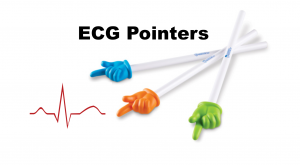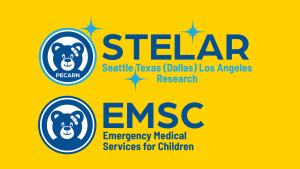Today on the emDOCs cast with Brit Long (@long_brit), we cover the Lisfranc injury.
Episode 118: Lisfranc Injury
What is it?
- The Lisfranc joint complex is a tarso-metatarsal articulation named for Jacques Lisfranc (1790-1847), one of Napoleon’s battlefield surgeons.
- A Lisfranc injury is any injury/disruption to this joint complex. Exist along a spectrum: minor subluxation to fracture and dislocation.
- Account for approximately 0.2% of all fractures with an annual incidence of 1 per 55,000 persons.
- A study published in 2020 found an incidence of 14 per 100,000 person-years; the incidence of unstable injuries was 6 per 100,000 person-years.
- Most common in male patients in their 20s.
- Easy to miss: uncommon, x-ray findings often subtle or absent; 20-50% of cases are misdiagnosed during the initial evaluation.
- Delay in diagnosis and treatment of Lisfranc injuries can cause post-traumatic pain and arthritis -> decrease in quality of life.
What is the tarsometarsal joint complex?
- TMT joint complex involves the articulation of the three cuneiform bones and cuboid bone with the bases of the five metatarsals along with ligaments. These join the midfoot and forefoot.
- The bases of the first, second, and third metatarsals and cuneiform bones form a transverse arch. The second metatarsal is the key part of that arch.
- The Lisfranc ligament connects the medial cuneiform and the second metatarsal. This anchors the entire complex and prevents displacement. It consists of the dorsal, interosseous, and plantar ligaments and Strongest = interosseous ligament; weakest = dorsal ligament. Injury usually associated with dorsal displacement of the metatarsal bases because the dorsal ligament is weakest. No ligament connects the 1st and 2nd metatarsals – greater susceptibility to injury.
- Injuries range from sprain to fracture-dislocation; divided into low energy and high energy.

History:
- Consider Lisfranc injury in any patient presenting with midfoot pain after an injury (low or high energy).
- Low-energy mechanisms are more common and occur when a rotational or axial force is transmitted to a stationary plantarflexed foot.
- Most common mechanism is plantar flexion and external rotation of the ankle.
- Classic description is a person riding a horse and falls with their foot caught in the stirrup or windsurfing because the forefoot is held in a fixed position as the rest of the body is falling or rotating
- Other sports-related injuries (football, gymnastics), falls, or missteps (stepping off a curb or down into a hole, missing a step, stepping on a heel of another person when plantar flexed).
- In kids it’s known as a “bunk bed fracture” where a child jumps and then land on their toes.
- High-energy mechanisms: motor vehicle or motorcycle accidents, industrial accidents, crush injuries.
- Consideration: Patients with neuropathy may not remember the exact onset or mechanism.
Exam:
- Classic presentation is midfoot pain, swelling, medial plantar ecchymoses, inability to bear weight.
- Subtle injuries: patients may only have pain with activity or movement of the foot.
- Suggestive findings: Pain with palpation of the midfoot and compression across the TMT joint complex; plantar ecchymosis.
- Other exam maneuvers:
- “Piano key test” can isolate the area injured; hold the midfoot form and move each head of each metatarsal.
- Pronation-abduction test (stress test): use one hand to abduct and pronate the forefoot while using the other hand to stabilize the heel.
- Can also stress the Lisfranc complex by having the patient plantar flex the foot while adducting the first digit.
- Single limb heel raise: patient stands on the affected leg and then on tiptoes.
- Pain along midfoot with these tests -> suggestive of Lisfranc injury.
- Neurovascular exam necessary; Lisfranc injury can cause neurovascular compromise from DP artery transection or compartment syndrome.
- Assess dorsalis pedis pulse, capillary refill, and deep peroneal nerve (sensation in the first dorsal webspace and extension of the first digit).
- Consider compartment syndrome in patients presenting after a high-energy trauma, pain out of proportion, NV changes, paresthesias, requiring multiple doses of analgesics without relief. Pallor, temperature changes, pulselessness, paralysis are later findings in compartment syndrome.
Imaging:
- 1st line imaging: X-ray of the foot with AP, lateral, 30-degree oblique views.
- Big picture: look for bony widening, misalignment and fracture or avulsion.
- X-ray findings:
- Widening:
- > 2 mm widening between the bases of the first and second (most common finding on x-ray) or the second and third metatarsals on AP or oblique x-rays.
- Misalignment:
- AP x-ray: Misalignment of the medial edge of the second metatarsal base with the medial edge of the middle cuneiform.
- Oblique x-ray: Misalignment of the third metatarsal base with the lateral cuneiform and fourth metatarsal base with the cuboid.
- Lateral x-ray: Misalignment of the dorsal and plantar borders of the metatarsals with the articulating cuboid and cuneiforms; dorsal displacement of the proximal 1st or 2nd metatarsal base.
- Fracture/avulsion:
- “Fleck sign” – small bony avulsion fragment from the second metatarsal or medial cuneiform; pathognomonic fracture of the base of the first, second, or third metatarsals.
- Widening:
- X-ray sensitivity over 80%, specificity over 90%.
- 20-24% of Lisfranc injuries are missed on plain x-ray, mainly because it could be a sprain and not a fracture, or we are not looking for the injury.
- Three ways to improve diagnostic accuracy:
- 1) Compare radiographs of the affected and unaffected foot (look for asymmetric widening > 1-2 mm between the medial cuneiform and the base of the second metatarsal and/or between the bases of first and second metatarsals.
- 2) Obtain weight bearing films and compare (of note, weight bearing is painful, and patients may require PO/IV analgesia, local anesthetic, or an ankle nerve block prior to obtaining these views).
- A 2023 case report discusses injecting 10 mL of 1% lidocaine into the second and third tarsometatarsal joint spaces for analgesia.
- Ankle nerve block involves blocking the five peripheral nerves that innervate the foot and ankle but can be challenging to perform in the ED setting.
- 3) Obtain other imaging: CT, MRI, US.
- CT: Greatest utility beyond x-ray in the ED setting to look for bony injury, misalignment, and joint stability. Several studies recommend CT in all patients with suspected Lisfranc injury. Particularly helpful if unable to get adequate weight bearing films, concern for subtle injury, or concern present despite negative x-ray. Also helpful for operative planning.
- MRI: May obtain in outpatient setting if plain radiographs and CT are non-diagnostic. MRI superior in diagnosing ligamentous injury; can also show bone marrow edema (may indicate small avulsion fractures or sprains).
- US: Not ready for primetime; studies suggest measuring the dorsal ligament length between the medial cuneiform and second metatarsal while weight bearing.




Management:
- If confirmed or suspected -> consult orthopedics (do not need to see in ED for all patients).
- Stable vs. all others
- Stable injuries (non-displaced injuries with less than 2 mm diastasis between the base of the first and second metatarsals) -> make non-weightbearing and place in a short posterior leg splint (8 weeks); orthopedics follow up within 1 week.
- Fracture displacement, dislocation -> reduce if displaced/dislocated (hang the foot by the toes using finger traps and then reduce); place in short leg posterior splint. If NV status intact following reduction and splinting; discharge in non-weightbearing status with orthopedics follow up.
- Open fracture, NV injury/compromise (before or after reduction), compartment syndrome -> reduce if necessary, splint, emergent orthopedic consultation for evaluation, admit.
- Ultimately many patients require operative intervention, particularly if displaced or transverse unstable injuries (lower functional outcomes with nonoperative management)
- Nonoperative only with splinting may be used for nondisplaced injuries that are stable with weightbearing, no fracture on CT. May also be used for patients who are non ambulatory at baseline, have severe vascular disease, severe peripheral neuropathy.
Summary:
- A Lisfranc injury includes any injury to the TMT joint complex.
- Consider the diagnosis in patients with midfoot pain or swelling in the setting of high or low energy trauma.
- Common mechanisms: motor vehicle or motorcycle accidents, fall, crush injuries, sports, fall off of a horse, and windsurfing. It can also occur when jumping or stepping from height onto a flexed foot.
- Patients may present with midfoot pain, swelling, or plantar ecchymosis. Pain is usually worse with weight bearing and ambulation. Pain can be elicited with the piano key test, the stress test, and palpation of the midfoot.
- Patients with a Lisfranc injury are at risk of neurovascular compromise and compartment syndrome due to proximity of the dorsalis pedis artery.
- X-rays should be used to evaluate for misalignment, widening, and fractures. The utility of x-rays can be enhanced with weight bearing or comparison films.
- If x-rays are negative but clinical suspicion remains, obtain CT.
- All suspected Lisfranc injuries should be placed in a posterior splint. Patients should be instructed not to bear weight until they are evaluated by orthopedics.
- All Lisfranc injuries require orthopedic evaluation. Urgency of evaluation depends on the severity of the injury.
- Prompt diagnosis and orthopedic consultation can prevent long-term pain and immobility.
References:
- McDermott A, Repanshek Z, Koyfman A, Long B. High risk and low incidence diseases: Lisfranc injury. Am J Emerg Med. 2024 Nov;85:172-178.
- Neradi D, Sharma S, Patel S, Dhillon MS. Not to be missed: Subtle radiographic findings of the ligamentous Lisfranc injury. J Emerg Med. 2020;59(4):e143-e147. doi: 10.1016/j.jemermed.2020.06.056.
- Mulcahy H. Lisfranc injury: Current concepts. Radiol Clin North Am. 2018;56(6):859-876. doi: 10.1016/j.rcl.2018.06.003.
- Desmond EA, Chou LB. Current concepts review: Lisfranc injuries. Foot Ankle Int. 2006 (8):653-60. doi: 10.1177/107110070602700819.
- Stødle AH, Hvaal KH, Enger M, Brøgger H, Madsen JE, Ellingsen Husebye E. Lisfranc injuries: incidence, mechanisms of injury and predictors of instability. Foot Ankle Surg. 2020 (5):535-540. doi: 10.1016/j.fas.2019.06.002.
- Sherief TI, Mucci B, Greiss M. Lisfranc injury: how frequently does it get missed? And how can we improve? Injury. 2007;38(7):856-60. doi: 10.1016/j.injury.2006.10.002.
- Burroughs KE, Reimer CD, Fields KB. Lisfranc injury of the foot: a commonly missed diagnosis. Am Fam Physician.1998;58(1):118-24.
- Moracia-Ochagavía I, Rodríguez-Merchán EC. Lisfranc fracture-dislocations: current management. EFORT Open Rev. 2019;4(7):430-444. doi: 10.1302/2058-5241.4.180076.
- Perron AD, Brady WJ, Keats TE. Orthopedic pitfalls in the ED: Lisfranc fracture-dislocation. Am J Emerg Med. 2001;19(1):71-5. doi: 10.1053/ajem.2001.19990.
- Gupta RT, Wadhwa RP, Learch TJ, Herwick SM. Lisfranc injury: imaging findings for this important but often-missed diagnosis. Curr Probl Diagn Radiol. 2008;37(3):115-26. doi: 10.1067/j.cpradiol.2007.08.012.
- Llopis E, Carrascoso J, Iriarte I, Serrano Mde P, Cerezal L. Lisfranc injury imaging and surgical management. Semin Musculoskelet Radiol. 2016;20(2):139-53. doi: 10.1055/s-0036-1581119.
- Nunley JA, Vertullo CJ. Classification, investigation, and management of midfoot sprains: Lisfranc injuries in the athlete. Am J Sports Med. 2002;30(6):871-8. doi: 10.1177/03635465020300061901.
- Schepers T, Rammelt, S. Classifying the Lisfranc injury: Literature overview and a new classification. Fuß & Sprunggelenk. 2018;16(3):151-159.
- Henry J, Discala N, Rizzo S, Bitterman A. A novel technique for successful closed reduction of Lisfranc fracture-dislocation. Indian J Orthop. 2023;9(4):254-257. doi: 10.18231/j.ijos.2023.048
- DeLuca MK, Walrod B, Boucher LC. Ultrasound as a diagnostic tool in the assessment of Lisfranc joint injuries. J Ultrasound Med. 2020;39(3):579-587. doi: 10.1002/jum.15138.
- Rettedal DD, Graves NC, Marshall JJ, Frush K, Vardaxis V. Reliability of ultrasound imaging in the assessment of the dorsal Lisfranc ligament. J Foot Ankle Res. 2013;6(1):7. doi: 10.1186/1757-1146-6-7.








